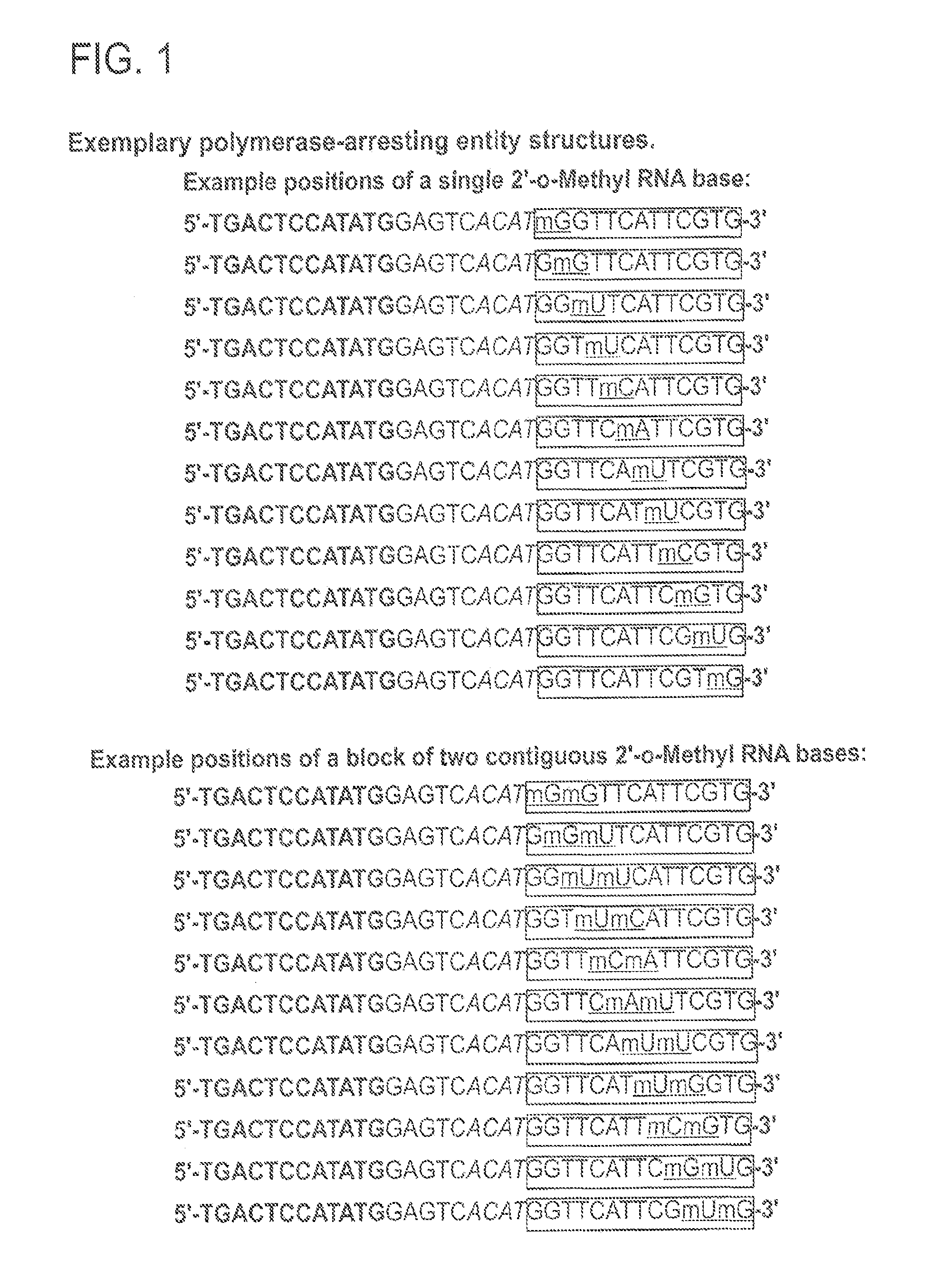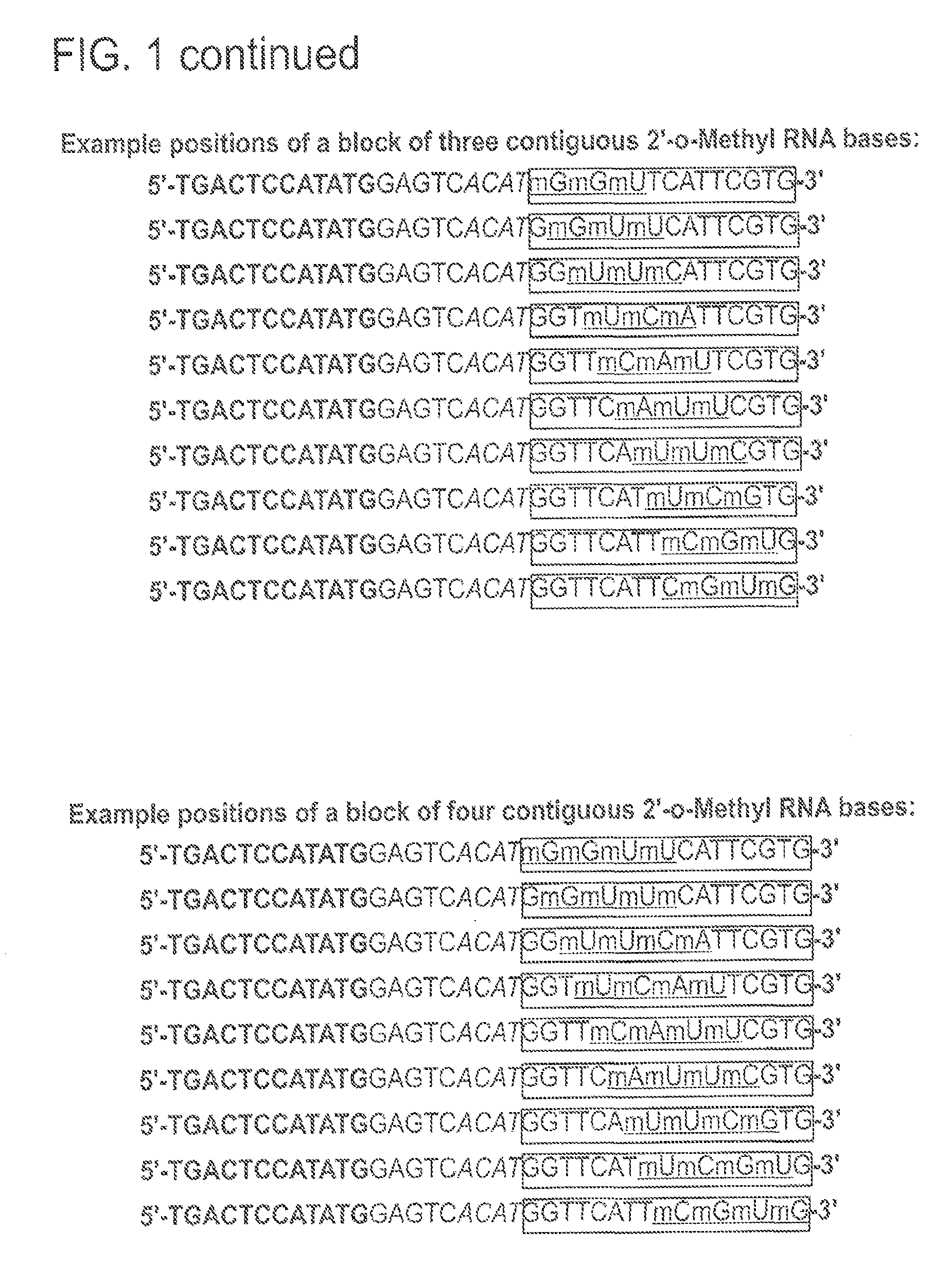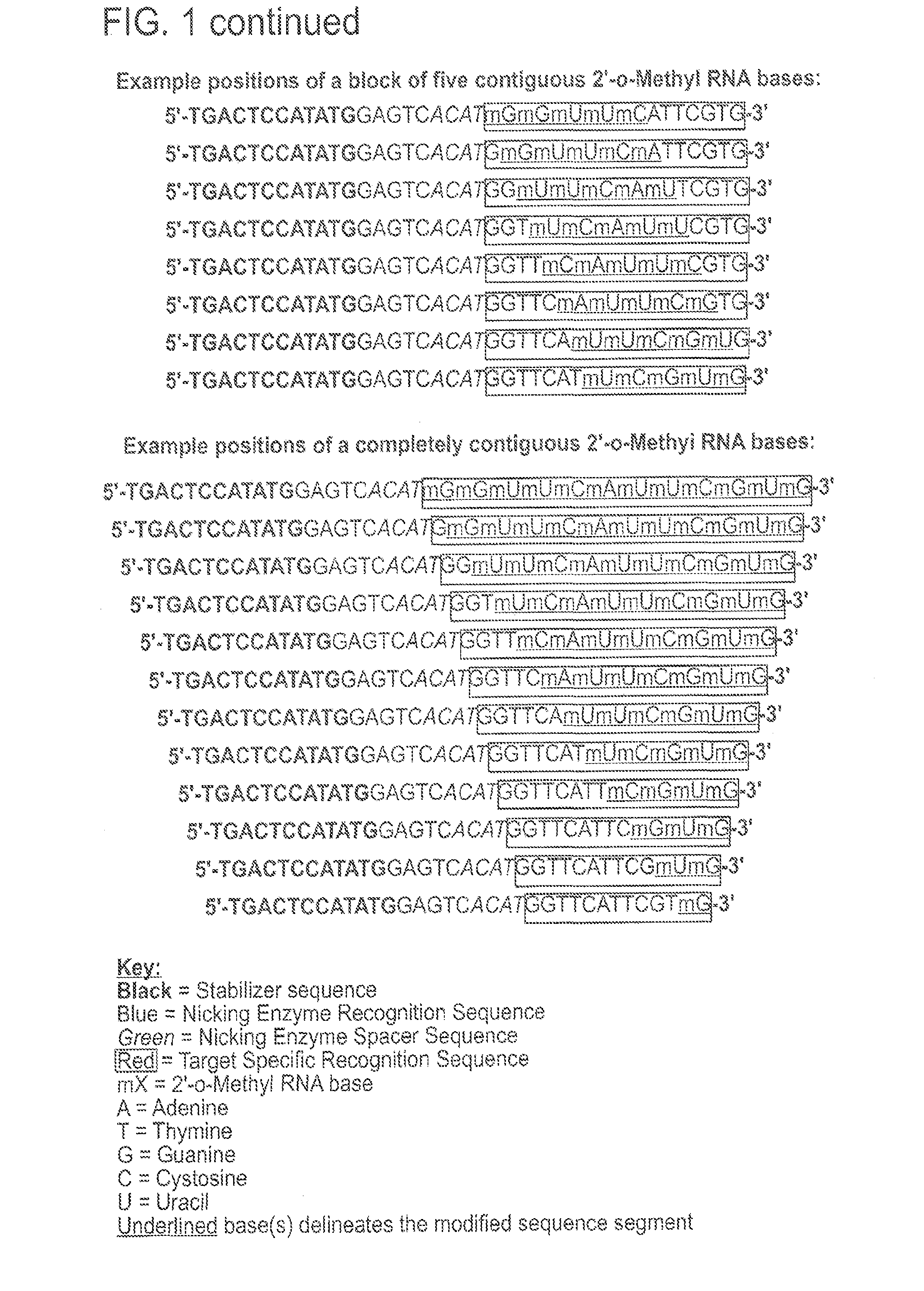Compositions and methods quantifying a nucleic acid sequence in a sample
quantitative technology, applied in the field of compositions and methods quantifying a nucleic acid sequence in a sample, can solve the problems of suboptimal reaction, difficult to quantify, troublesome, etc., and achieve the effect of reducing or eliminating the generation of background products
- Summary
- Abstract
- Description
- Claims
- Application Information
AI Technical Summary
Benefits of technology
Problems solved by technology
Method used
Image
Examples
example 1
Primer-Template Oligonucleotides Comprising 2′-O-Methyl Nucleotides Reduce or Eliminate Background Signal in NEAR Amplification
[0110]When NEAR amplification is performed without input target nucleic acid (i.e., No Target Controls; NTC's) signal is generated despite the absence of template. Thus, generation of background signal has the potential to decrease the accuracy of target nucleic acid quantitation using NEAR amplification. It was hypothesized that the background signal was generated, in part, by formation of primer-dimers by primer / template oligonucleotides. Without being bound to theory, polymerase arresting structures comprising 2′ modified nucleotides could by used to reduce or eliminate intermolecular and / or intramolecular interactions of primers / templates (e.g., primer-dimer formation), and, thereby, reduce or eliminate the background signal in NEAR assay.
[0111]Exemplary polymerase-arresting entity structures from 5′ to 3′ comprise a stabilizer sequence, nicking enzyme r...
example 2
Positioning of 2′-O-Methyl Nucleotides in Primer / Template Oligonucleotides Altered Time-to-Detection and Efficiency of NEAR Reactions
[0115]Exemplary polymerase arresting entities having 2′-O-methyl modified nucleotides at different positions within the specificity region were used in NEAR amplification reactions and their reaction kinetics studied. In particular, the primer / templates studied included a pair of oligonucleotides having a block of five 2′-O-methyl nucleotides placed at the 3′ end of the specificity region or at the 5′ end of the specificity region (2 nucleotides downstream of the nick site) (FIG. 5). Standard reactions were carried out in duplicate with a block of 2′-O-methyl nucleotides on the 3′-end or starting at the 3rd nucleotide after the nick site and continuing for 5 bases or a mixture of these two structures as indicated. Target DNA was genomic Clavibacter michiganensis sepidonicus (Cms). Detection was based on Molecular Beacon at a final concentration of 100 ...
example 3
Complete Suppression of Nonspecific Amplification in NEAR Assays Utilizing Primer-Templates with Long Target Specific Regions
[0117]A NEAR assay for the quantification of the corn alcohol dehydrogenase 1 gene (ADH1) was designed utilizing two alternative sets of forward and reverse primer-templates (TS3 & TS3). No suitable nicking enzyme recognition site could be located within 500 nucleotides upstream or downstream from the target sequence region in corn gDNA. Both sets of primers-templates feature longer target complementary regions (16 and 19 nucleotides, respectively) capable of strand invasion mediated hybridization with the target DNA. In the first set (TS3) the target complementary regions of the forward and reverse primer-templates contain a block of 5 consecutive 2′-O-methyl modified ribonucleotides immediately upstream from the 3′-terminal deoxynucleotide. The remainder of the target sequence complementary region comprises a sequence of alternating unmodified deoxynucleotid...
PUM
| Property | Measurement | Unit |
|---|---|---|
| temperature | aaaaa | aaaaa |
| temperature | aaaaa | aaaaa |
| pH | aaaaa | aaaaa |
Abstract
Description
Claims
Application Information
 Login to View More
Login to View More - R&D
- Intellectual Property
- Life Sciences
- Materials
- Tech Scout
- Unparalleled Data Quality
- Higher Quality Content
- 60% Fewer Hallucinations
Browse by: Latest US Patents, China's latest patents, Technical Efficacy Thesaurus, Application Domain, Technology Topic, Popular Technical Reports.
© 2025 PatSnap. All rights reserved.Legal|Privacy policy|Modern Slavery Act Transparency Statement|Sitemap|About US| Contact US: help@patsnap.com



